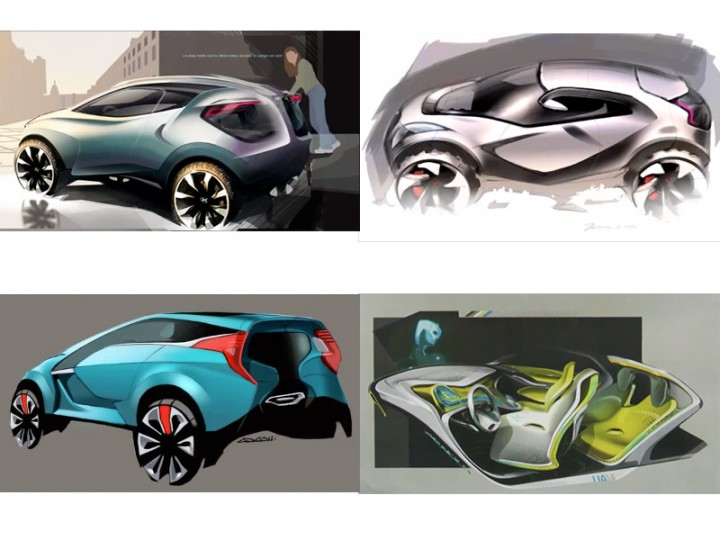Every car we see on the road is a product of meticulous design and engineering. Behind the sleek lines, innovative features, and overall aesthetic appeal of Hyundai cars lies a team of talented designers who shape the future of automotive design. In this article, we delve into the world of Hyundai car design, exploring the roles, processes, and innovations driven by these creative minds.
The Role of Design in Hyundai
Design plays a crucial role in defining Hyundai’s brand identity and market positioning. It goes beyond mere aesthetics to encompass functionality, user experience, and technological integration. The design team at Hyundai is tasked with creating vehicles that resonate with global consumers while pushing the boundaries of automotive innovation.
Key Responsibilities of Hyundai Designers
- Concept development: Generating initial design ideas and concepts that align with market trends and consumer preferences.
- Sketching and rendering: Translating concepts into detailed sketches and digital renderings using advanced design software.
- Modeling and prototyping: Creating physical and virtual models to visualize and refine designs before production.
- Collaboration with engineers: Working closely with engineering teams to ensure that designs meet technical specifications and regulatory requirements.
- User-centric design: Incorporating user feedback and ergonomic principles to enhance driver and passenger experience.
The Hyundai Design Philosophy
Hyundai’s design philosophy revolves around several core principles that guide their approach to creating vehicles:
Fluidic Sculpture Design
Introduced in 2009, Hyundai’s Fluidic Sculpture design philosophy emphasizes a sense of fluid motion and dynamic aesthetics. This design language aims to evoke a feeling of movement even when the vehicle is stationary, enhancing both visual appeal and aerodynamic efficiency.
Sensuous Sportiness
Building upon Fluidic Sculpture, Hyundai’s latest design philosophy, Sensuous Sportiness, aims to create emotional value through proportional, emotional, and sensual design elements. This approach is evident in recent models like the Hyundai Sonata and Hyundai Tucson, which feature bold lines, expressive surfaces, and a futuristic appeal.
Behind the Design Process
The design process at Hyundai is a multi-stage journey that begins with extensive research and ends with the final production of a vehicle. Each stage involves collaboration among various departments and stakeholders to ensure alignment with Hyundai’s brand vision and market strategy.
Also Read : A Comprehensive Overview of Hyundai Hybrid Models
Research and Inspiration
Before pen hits paper, Hyundai’s design team conducts thorough research into global automotive trends, consumer preferences, and emerging technologies. Inspiration can come from anywhere—from nature and architecture to cutting-edge industrial design and cultural trends.
Concept Development
Once armed with insights and inspiration, designers begin sketching and conceptualizing ideas. These initial sketches evolve into more detailed renderings that capture the essence of the vehicle’s design language and key features.
Digital Modeling and Prototyping
With advancements in computer-aided design (CAD) and virtual reality (VR), Hyundai designers can create detailed digital models of their concepts. Virtual prototyping allows for rapid iteration and refinement, saving time and resources compared to traditional clay modeling.
Physical Prototyping and Testing
Physical prototypes are crucial for evaluating design feasibility, ergonomics, and performance. Hyundai’s design team collaborates closely with engineers to address any technical challenges and ensure that the final product meets quality standards and regulatory requirements.
Innovation in Hyundai Design
Hyundai has been at the forefront of automotive innovation, integrating advanced technologies and sustainable practices into their design process:
Technological Integration
Hyundai embraces cutting-edge technologies such as augmented reality (AR), artificial intelligence (AI), and advanced driver-assistance systems (ADAS) to enhance vehicle design and functionality. These technologies not only improve safety and convenience but also provide a futuristic driving experience.
Sustainable Design Practices
As sustainability becomes increasingly important, Hyundai is committed to reducing the environmental impact of its vehicles. The use of eco-friendly materials, efficient manufacturing processes, and electric vehicle (EV) development are key pillars of Hyundai’s sustainable design strategy.
Case Studies: Iconic Hyundai Designs
Several Hyundai models have left a significant mark on the automotive industry, showcasing the brand’s design prowess and innovation:
Hyundai Sonata
The Hyundai Sonata is a testament to Hyundai’s commitment to design excellence. Known for its sophisticated styling, premium features, and reliable performance, the Sonata has garnered praise for its bold design language and innovative technologies.
Hyundai Tucson
The Hyundai Tucson exemplifies Hyundai’s Sensuous Sportiness design philosophy with its striking exterior, futuristic cabin, and advanced driver-assistance features. The Tucson’s success underscores Hyundai’s ability to blend aesthetics with functionality seamlessly.
The Future of Hyundai Design
Looking ahead, Hyundai continues to innovate and redefine automotive design:
Electric Vehicles (EVs)
Hyundai is ramping up its EV efforts with models like the Hyundai Ioniq 5 and Hyundai Kona Electric, focusing on futuristic designs that cater to eco-conscious consumers.
Autonomous Vehicles
With advancements in autonomous driving technology, Hyundai is exploring new design opportunities to enhance the user experience and safety of self-driving vehicles.
Conclusion
The designers behind Hyundai cars play a pivotal role in shaping the future of mobility. Through creativity, innovation, and a deep understanding of consumer needs, Hyundai continues to set benchmarks in automotive design. As the industry evolves, Hyundai remains committed to pushing boundaries and delivering vehicles that inspire and delight drivers around the world.
By gaining insights into Hyundai’s design philosophy, processes, and innovations, we appreciate the intricate balance between artistry and engineering that defines each Hyundai vehicle on the road today.
This comprehensive article explores the intricate world of Hyundai car design, from the foundational philosophies to the innovative technologies shaping the future of mobility.
(source)
Originally posted 2024-07-15 07:19:14.
